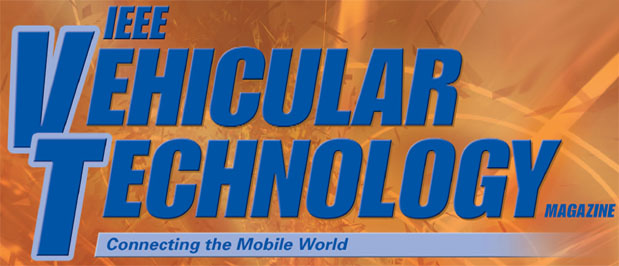Call For Papers: Special Issue on the
State of the Art in Propagation and Mobile Channel Modeling
Important Dates
Manuscript Submissions Due: EXTENDED to 15 November 2014
Acceptance Notification: 1 February 2015
Final Manuscripts Due: 1 March 2015
Publication: June 2015
In recent years, the ever growing demand for multimedia services, high mobility, and global connectivity has resulted in an explosion of new technologies for wireless communication systems. The design of all components of wireless communication systems, ranging from digital modulation schemes over channel coding techniques up to higher layer protocols, is influenced by the propagation characteristics of the mobile channel. A thorough understanding of mobile channels is therefore crucial for the development, performance optimization, and test of present as well as next generation mobile communication systems. This is the reason why exploring the mobile channel has always been a key research topic from the very beginning of mobile communications until today. Currently, the research on mobile channels involves a variety of challenging topics, such as the modeling of car-to-car channels, multiple-input multiple-output (MIMO) channels, relay channels, and ultra wideband channels, to name only a few. The objective of this special issue is first to capture the state of the art in the fascinating areas of propagation and mobile channel modeling and second to make recent research results readily comprehensible to a wide readership.
Topics
The articles in this special issue will report on the state of the art in propagation and mobile channel modeling. The topics of interest include, but are not limited to, the modeling, analysis, simulation, and measurement of:
- Acoustic underwater channels
- Aeronautical and satellite channels
- Channels for 3G, 4G, and 5G mobile radio systems
- Cooperative and multi-link channels
- High speed railway channels
- Indoor, outdoor, and indoor-to-outdoor channels
- Machine-to-machine and mobile-to-mobile channels
- MIMO channels
- On-body channels
- Power line communication channels
- Ultra wideband and multi-band channels
- Vehicle-to-vehicle (V2V), vehicle-to-infrastructure (V2I), and vehicle-to-person (V2P) channels
- 60-GHz and 90-GHz channels.
In addition, the topics of interest include generic issues related to mobile channel modeling, such as:
- Advanced ray tracing techniques
- Advances in path loss modeling
- Channel capacity
- Channel parameter estimation methods
- Channel sounding techniques
- Characterization of stationary and non-stationary mobile channels
- Design of hardware and software channel simulators.
Papers should be of tutorial nature and contain state-of-the-art research and development materials. Authors must follow the IEEE Vehicular Technology Magazine guidelines regarding the manuscript format. Articles should be about 3000 words long, with 5 to 10 figures and 10 to 15 references. The use of mathematical equations should be limited a maximum of 3. All papers should be submitted online using Manuscript Central: http://mc.manuscriptcentral.com/vtm-ieee

